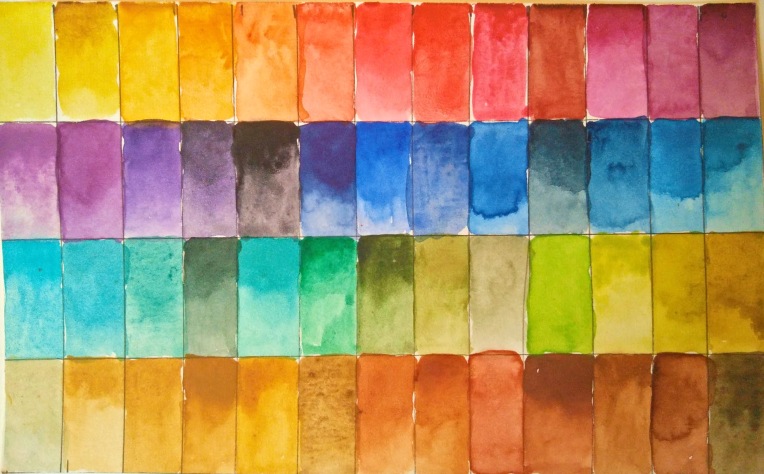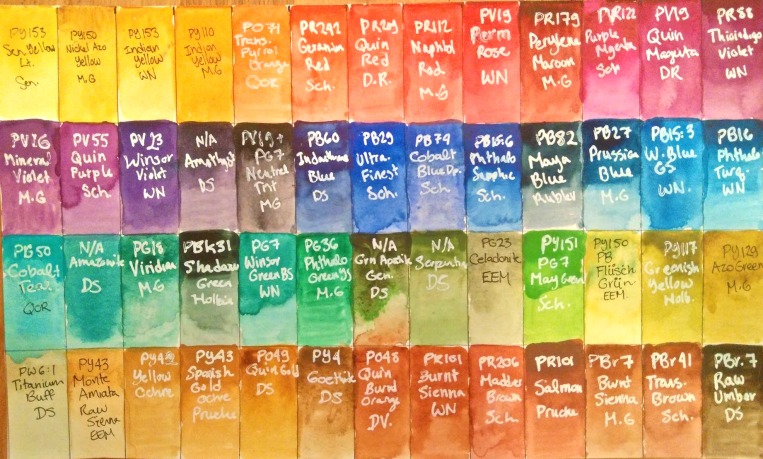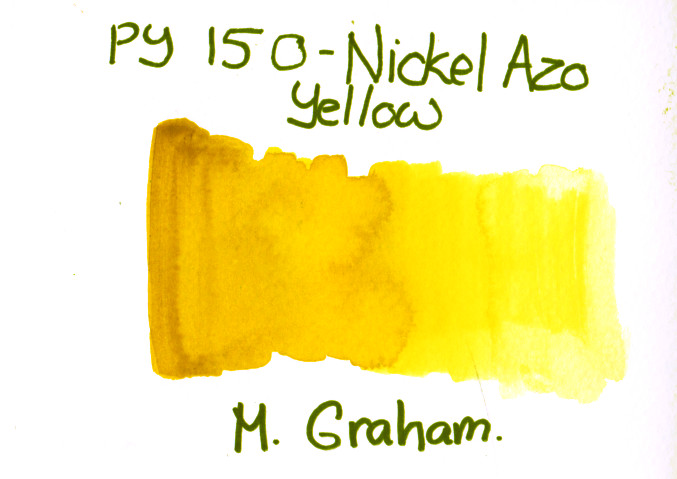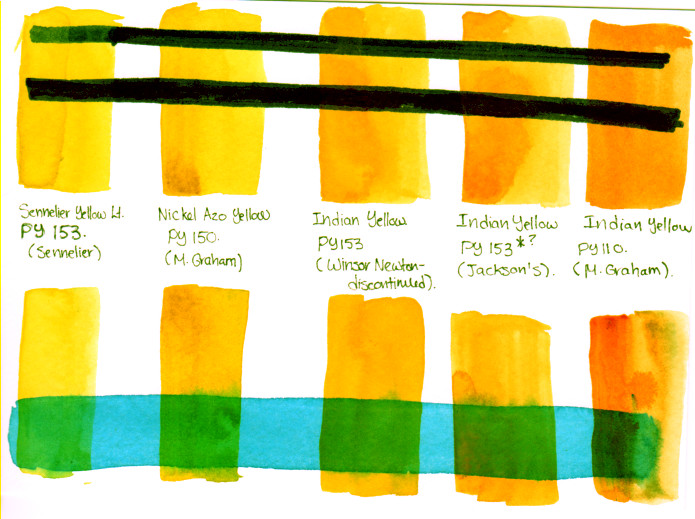Most of the watercolours in my collection are from established brands such as Schmincke and Sennelier. However, there is another option for purchasing watercolour paints. Independent watercolour makers are a growing industry.
Buying watercolours from handmade paint makers is one way to try out unusual pigments. Indie paint makers buy powdered pigments from sources such as Kremer Pigments, or collect their own natural pigments. Handmade brands sometimes offer pigments that are not available in larger brands.
Buying from an indie paint maker is kind of like buying usable art. The personality of each paintmaker shows through their packaging, colour selection, marketing, etc. Many handmade brands also have curated paint collections with a consistent “look” or personality to their paints.
Handmade watercolour paints are not a budget option – the high manual labour cost of making watercolour in small batches means that indie paint brands tend to be more expensive than commercial brands. (Some) indie paint brands can also be frustrating, as indie paint makers may use creative names for common pigments, advertise fugitive paints as lightfast, and do not publish pigment information.
My favourite handmade watercolour brands
Here are a few handmade watercolour brands I love. I have had amazing experiences with these brands:
Pruche
Made by the lovely Eve Bolt in Montreal, Canada, this brand was my introduction to handmade paints. Eve made a great series about her paintmaking experiments when she first started mulling paints. Pruche offers a small but solid range of earth colours and bright synthetic pigments including common favourites and a few uncommon (and uncommonly beautiful) earth colours.
Pruche paints have clear and concise pigment documentation in the listings, on the packaging, and directly on the pans, which I strongly appreciate. Pruche paints have a pleasant, even consistency, strong pigment load, rewet readily and are neatly poured into, in her words, “the nice pans from Jackson’s” (Eve and I agree on this point, the half-pans at Jackson’s are much nicer than many other half-pans on the market).

Pruche paints are an ideal choice if you are looking to supplement or replace a basic collection of commercially made paints. Her use of primarily single pigments and great pigment documentation make it easy to shop for both well-known pigments and unusual extras.
I have used Pruche paints (in Spanish Gold Ochre, Prussian Blue, and Salmon) as the inspiration for a limited gamut travel palette I recently built, and will tour in my next blog post. Like many brands, Eve posts her shop updates on Instagram
Everything, Everything Mixes
These are mad scientist paints. I strongly, strongly recommend making friends with EEM’s creator, Amé, on Instagram. There, you’ll learn how she sources all kinds of rare and unusual pigments, and then mixes them up into moody, granulating, crazy, colourful, misbehaving magic paints that also happen to be vegan and smell like cloves.

She makes paints out of ground up epidote and burnt green earth and the rare bluer shade of cobalt teal which she found in some hole in the wall shop in Berlin. If you buy Flüsch Green (a spring green made with the unique PB71 Zirconium Cerulean) she’ll ship you a multimedia painting of one of her cats.
My EEM paints are fun paints. They’re more of a wild ride to use than strictly practical (although I have found practical uses for them – the Flusch Green is actually perfect the bright springy undertones of many plants).
Penholder Art
If you’re a pigment geek or history buff looking for the highest pigment load, or rare discontinued pigments, Penholder Art is the handmade paintmaker for you.
 Penholder Art is, I believe, one of only 2 remaining small manufacturers of real unadulterated PB33 Manganese Blue paint, an absolutely beautiful electric blue pigment that has been discontinued from pigment production due to toxicity. Penholder Art also produces several other rare paints made with toxic/discontinued historic pigments.
Penholder Art is, I believe, one of only 2 remaining small manufacturers of real unadulterated PB33 Manganese Blue paint, an absolutely beautiful electric blue pigment that has been discontinued from pigment production due to toxicity. Penholder Art also produces several other rare paints made with toxic/discontinued historic pigments.
Penholder Art is a relative newcomer to the paintmaking world, and slightly rough around the edges. Packaging can be slightly messy and some paints can be a little sticky/messy. However, Dan from Penholder Art is very friendly and approachable, and offers fantastic prices on some of the most saturated and vibrant paints I have ever seen.
Other indie brands
Greenleaf and Blueberry
The (relative) giant in the handmade watercolour world is Greenleaf and Blueberry. They have a massive social media cult following, which allows them to post flash sales which sell out within minutes.

In September 2017, I managed to catch one of these sales, and impulse bought myself a little earth secondary triad of three whole pans. They are nice paints, but after taxes and shipping and duty, cost me over $120 CAD, or over $40/pan (for earth colours!). I honestly can’t imagine any paint, no matter how revolutionary, being worth that much money, and these paints are just nice.
For comparison, I swatched out some similar colours from other handmade and commercial brands, which were all less than a third of the price. All these paints rewet and granulate similarly and are equally saturated.

On the far left to right we have Celadonite Green Earth by Eventually, Everything Mixes, compared to Green Earth by G&B. I had trouble getting a saturated pigment load from either as I’ve done in the past, perhaps because of the super dry and cold weather. However, these two paints are nearly identical. The EEM paint is about 1/3 the price per volume.
In the middle, I compared Purple Ochre to Piemontite Genuine (Watercolour Stick) by Daniel Smith, and Mars Violet by Pruche, which are both very similar but slightly more reddish than the G&B paint. Both the Daniel Smith and Pruche paints rewet much more easily and are more saturated. The Pruche paint is around 1/3 the price per volume, and the Daniel Smith sticks are a great deal, at about 1/8th the price per volume.
On the right, I compared Orange Ochre to Spanish Gold Ochre by Pruche, as well as Raw Sienna by Da Vinci. The gold ochre is slightly more yellow, and the Raw Sienna is slightly browner, but they are all very similar and equal saturation (although both handmade paints required some coaxing to rewet in this dry weather). The Spanish Gold Ochre, again, works out to about 1/3 the price, whereas the Raw Sienna, always an affordable paint, I got on clearance sale for $5 for a 37 mL tube (which I think works out to about 1/16 the price or less).
I was hesitant to post this review, because Greenleaf and Blueberry is a cool company who make an effort to source unique pigments, and they really are good paints. If money is no object, Greenleaf and Blueberry paints are great.
However, I wanted to post an unbiased review to cut through some of the social media hype. If you’re on a budget, you can get very similar paints without spending nearly so much money, and even support smaller handmade paint makers in the process.
Other Brands
There are also a great many other handmade watercolour brands I am less familiar with. A few brands I watch out for are Peppercon Arts, Wanderlust WC, Hushwing Watercolours, Rivervale Watercolor and Ruby Mountain Paint Company .
Do you have a great handmade watercolour brand to recommend? Let me know in the comments!
THIS POST CONTAINS AFFILIATE LINKS. LEE ANGOLD IS A PARTICIPANT IN THE AMAZON SERVICES LLC ASSOCIATES PROGRAM AND THE JACKSON’S ART AFFILIATE NETWORK. THESE ARE AFFILIATE ADVERTISING PROGRAMS DESIGNED TO PROVIDE A MEANS FOR SITES TO EARN ADVERTISING FEES BY LINKING TO PRODUCT LISTINGS.









